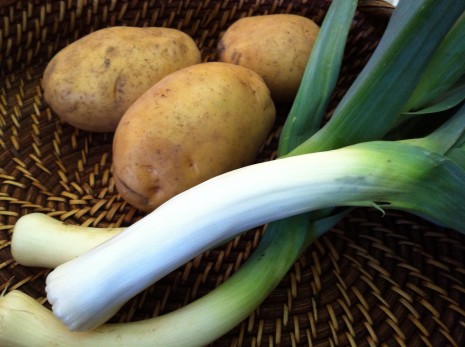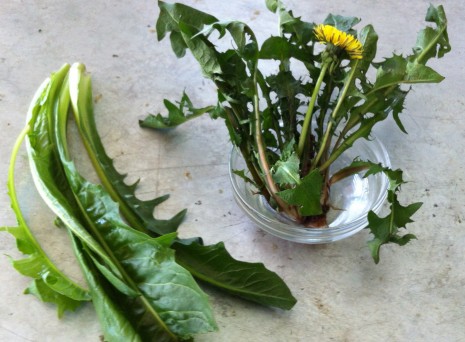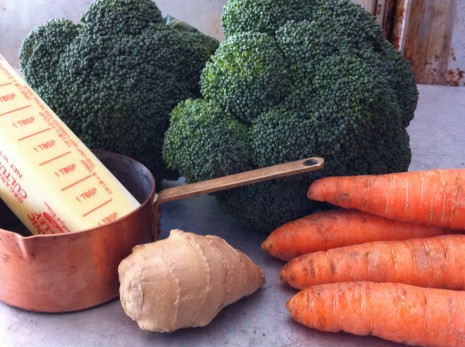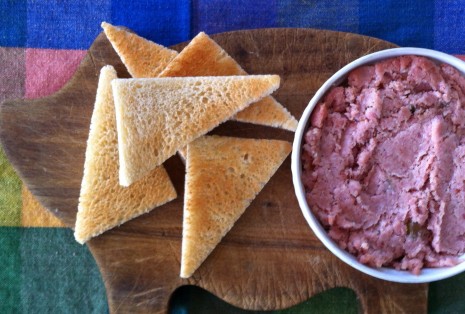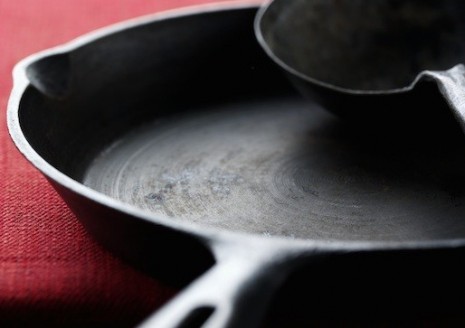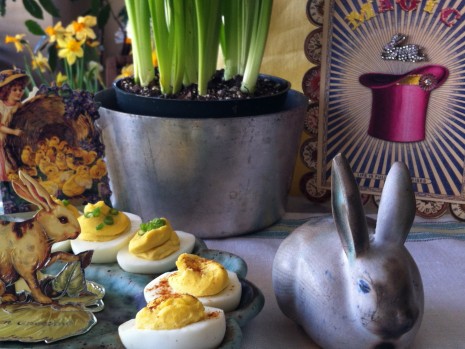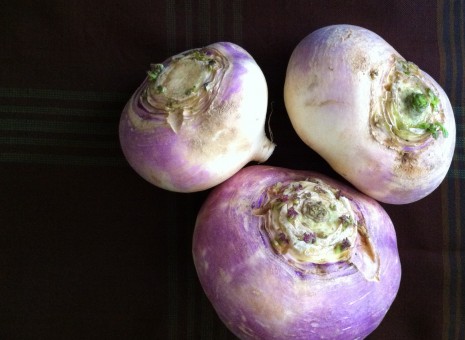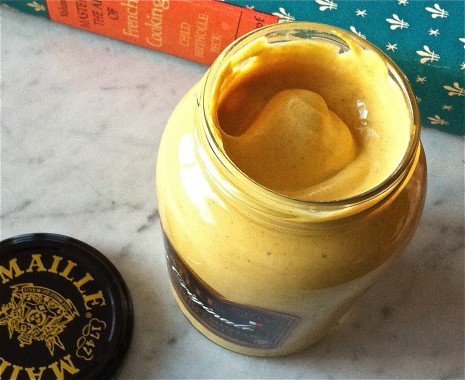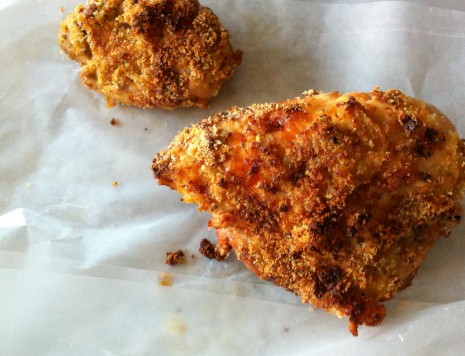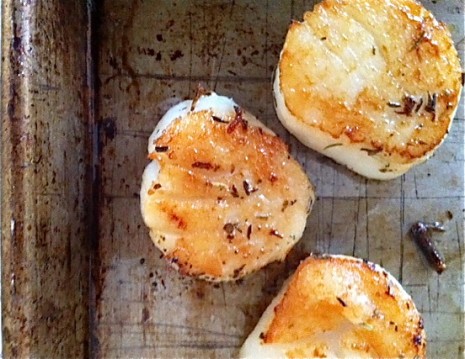LEEK AND POTATO SOUP
Some soups require a lengthy list of ingredients and plenty of time on the back burner—they are worth preparing in a big batch so you can freeze a couple of quarts for another day. Leek and potato, however, does not need this sort of commitment. It’s an uncomplicated, almost austere, farmhouse soup that makes the most out of two vegetables, and it’s easily cobbled together on the fly.
I made it the other day after a trip to Union Square, pulling the leeks and spuds out of my tote bag and prepping them straightaway. Then as the soup simmered, I stowed the rest of my haul and set the kitchen to rights. Filling and fresh-tasting, the soup was exactly what we wanted on a windy cold April afternoon.
In terms of flavor, the leek is the most nuanced member of the onion-garlic clan. When shopping, look for fresh, relatively crisp leaves and stout white stems; the longer the stems, the greater your yield of chopped leeks will be. Left whole, with roots untrimmed, leeks will easily last a couple of weeks in the refrigerator if you wrap them in a slightly dampened kitchen towel, then put them in a plastic bag.
As for the potatoes, they have varying starch and moisture contents depending on their type. Russets, the standard baking potato, are high in starch and low in moisture; Yukon Golds are medium in both categories; and boiling potatoes are low in starch and, you got it, high in moisture. Each will make a delicious soup in its own way, but I find that if I use boiling potatoes, I need to add more salt; low starch means a higher proportion of natural sugars. No matter what kind of potatoes you use, avoid any that are tinged with green; they’ve been improperly exposed to light and have produced a mild toxin called solanine.
Since I prefer organic potatoes, I often leave on the skins unless very thick; it seems a shame to waste them, and they add to the rough-hewn character of the soup*. And although some leek and potato soup recipes say to simmer the vegetables in chicken stock and/or milk, I stick with water. It’s cleaner tasting, and if you like, you can thin as well as enrich the finished soup with some milk or cream.
Leek and potato soup hits the spot for lunch, but it can be an extremely satisfying scratch supper, too. I like to embellish it with a handful of greens—spinach or lemony-tart sorrel, for instance, or finely shredded kale—and serve it with a plate of brown bread, sweet butter, and smoked or kippered salmon. I first had this combination in Scotland, in a gray stone cottage framed by neat rows of blue-green leeks, and to this day the meal conjures long twilights, crackling peat fires, and a very nice bottle of malt. In case you find yourself wishing for dessert, a rhubarb oatmeal crumble is as good as it gets.
Leek and Potato Soup
Serves 4
About 4 large leeks
About 1½ pounds potatoes
3 tablespoons unsalted butter
Coarse salt and freshly ground pepper
Water, milk, or cream to thin soup if necessary
Chopped fresh thyme, chives, chervil, or tarragon for serving, if desired
1. Trim off the roots and dark-green part of the leeks. Discard the tough outer leaf layer. Cut leeks in half lengthwise and thinly slice. Swish them around well in a bowl of cold water, then let them sit so that any soil or sand settles to the bottom of the bowl**.
2. Scrub the potatoes and peel if desired. Quarter them lengthwise and cut into ½-inch pieces. Gently lift the leeks out of their bath with your hands and drain.
3. Melt the butter in a pot, add the leeks, and cook over low heat until the leeks are softened. Add the potatoes and about 6 cups water; season generously with salt. Bring to a boil, then reduce the heat and simmer, partially covered, until the potatoes are very soft, 30 to 40 minutes. Don’t get impatient; you want the potatoes almost, but not quite, falling apart.
4. Smash some of the potatoes against the side of the pot to give the soup a thicker, smoother consistency, or, if you’re feeling ambitious, pulse a few ladles of soup in a blender, then return to pot. Taste and think about adding some milk or cream. Or not. Tinker with the seasoning. Ladle into bowls and scatter with chopped herbs if desired.
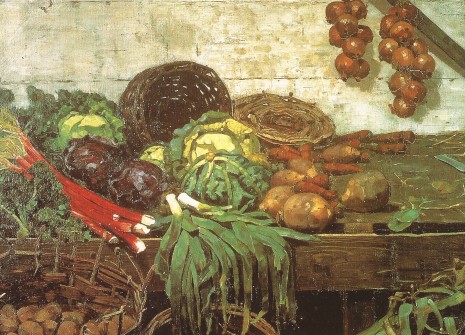
"The Vegetable Stall," by William York MacGregor (1884); photo courtesy National Gallery of Scotland, Edinburgh
*At the other end of the spectrum is crème vichyssoise, in which the leek and potato mixture is puréed with cream and served cold. This soup, which has great finesse and timeless appeal, was created by the French chef Louis Diat, who became chef de cuisine at the New York Ritz-Carlton in 1910. In 1947, he joined Gourmet as the in-house chef.
** Leeks always have a certain amount of soil embedded in their multitude of layers because of how they grow. Rain splashes the dirt onto the leaves, then washes it down to where the stem (which is actually lots of tightly bound leaves) begins. The particles of soil work their way deeper into the plants as they mature.
Posted: May 1st, 2012 under cooking, Gourmet magazine, recipes, scratch supper, Union Square Greenmarket.
Comments: none

